Mikey Brooks's Blog, page 22
March 19, 2013
Illustrating Tips from the Pros
As an illustrator I am always trying to find the best tips, not only for myself, but to share with others. I stumbled across a great Twitter tool in an article in Publisher’s Weekly. So in the spirit of “share, share, share” here you go:
#Arttipsis a great subject to follow on Twitter. Giuseppe Castellano, an award-winning illustrator and Art Director at Penguin, continually posts terrific advice for illustrators trying to break into the business. Follow him at: @pinocastellano
Over the past few weeks I have posed some questions to Giuseppe Castellano who readily gave great replies. Here are just a few that I found to be very helpful. My best tip is to follow this guy—seriously, he knows his stuff and he is super-duper helpful.
Q: I'm looking to do more children's book work. How?
A: Start with promos to 30-40 imprints, have a web presence (your site + social media.)
Q: Can you give me an example of a promo email?
A: Dear soandso; name is; I'm an; I researched your imprints; see my link; Thank you for time, Name. Remember: Art Director's aren't your bankers or best buds, so the cold email shouldn't read like we are. Be personal, professional, and to the point.
Q: Where is the best place to find a list for Art Director’s emails and addresses?
A: Two places to start are #SCBWI'sbook & the web. I did a quick search and found a list…
Q: Why is listing your email address better than having a contact form on your website?
A: Emails are filed for reference. Forms can't be.
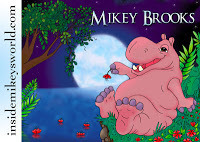 Giuseppe Castellano is also a huge fan of postcards. He expects to see one from you. In fact he takes pictures and posts them on Twitter and asks where your postcard is. Postcards are an easy way to get your art in front of Art Directors. Make sure you do your research and submit the proper art to each imprint. Have your website clearly printed on the front of the postcard and your name. You can use the reverse side for your mailing address and phone number. Best of luck in finding success in your art! And that’s my key on tips from the pros.
Giuseppe Castellano is also a huge fan of postcards. He expects to see one from you. In fact he takes pictures and posts them on Twitter and asks where your postcard is. Postcards are an easy way to get your art in front of Art Directors. Make sure you do your research and submit the proper art to each imprint. Have your website clearly printed on the front of the postcard and your name. You can use the reverse side for your mailing address and phone number. Best of luck in finding success in your art! And that’s my key on tips from the pros.
Published on March 19, 2013 07:14
March 9, 2013
Embrace Yourself as an Artist
Recently at LTUE, a writers conference in Utah, I was able to be involved with several fantastic panels of terrific artists: JamesA. Owen, Brian C. Hailes, Jess Smart Smiley, JJ Harrison, Bryan Beus, AndreaHatch, Jeff Brimley, Bobbie Berendson W., and Jessica Douglas. All of them extremely talented and successful in their own unique way. Each of them shared something that I engraved into my mind to help me on my own journey as an illustrator.
The one thing that I took away from these panels was that every artist needs to be committed to themselves as artists. While it is great to study the masters, it is not okay to make yourself feel inferiorto them. Everyone has their own style. As artist we must embrace our style and focus on what makes our art ours.
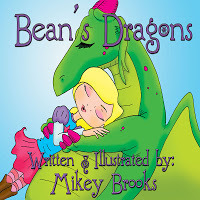 The realization of this hit me as I looked at myself sitting on these panels. I was surrounded by several successful, amazing illustrators. In the back of my head I had the naysayer Mikey telling me I didn’t belong and yet I did. What made me stick out from the others was not my overwhelming success as an illustrator—I am in the early stages of my career, what made me stick out was I was true to myself as an artist. I embraced my art, not someone else’s.
The realization of this hit me as I looked at myself sitting on these panels. I was surrounded by several successful, amazing illustrators. In the back of my head I had the naysayer Mikey telling me I didn’t belong and yet I did. What made me stick out from the others was not my overwhelming success as an illustrator—I am in the early stages of my career, what made me stick out was I was true to myself as an artist. I embraced my art, not someone else’s.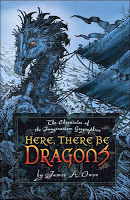 I shared on one panel something I feel applies to this train of thought. I was sitting next to James A. Owen, a man I greatly admire, not only for his art, but for his determination to share his dream with the world. My books were propped up next to his, all of them with dragons on the covers. I pointed this out to the audience. “I could draw James’ dragons if I spent my entire life drawing his dragons, but they would always be James’ dragons. They would never be Mikey’s. I had to find my own voice in the crowd and sing it. I had to draw my own kind of dragon.”
I shared on one panel something I feel applies to this train of thought. I was sitting next to James A. Owen, a man I greatly admire, not only for his art, but for his determination to share his dream with the world. My books were propped up next to his, all of them with dragons on the covers. I pointed this out to the audience. “I could draw James’ dragons if I spent my entire life drawing his dragons, but they would always be James’ dragons. They would never be Mikey’s. I had to find my own voice in the crowd and sing it. I had to draw my own kind of dragon.”The one thing I want to share is you need to embrace yourself as an artist and embrace your own art. Become what makes you unique, not what makes another person shine. I was humbled to be on panels with such a talented group of people. Last year it was just a dream to sit next to the masters. This year it was reality. Never give up on who you are or what you want to become. Let your voice be heard. Let your art shine! That’s my key on embracing yourself as an artist.
Published on March 09, 2013 00:00
March 5, 2013
FREE Writers Conference for Utah Locals
Published on March 05, 2013 08:23
March 1, 2013
ABC Adventures: Magical Creatures
Published on March 01, 2013 00:00
ABC Adventures: FREE TODAY!!
Get this eBook absolutely FREE today http://www.amazon.com/dp/B00AU7ZVOI/ref=tsm_1_fb_lkonly! Click the link below!
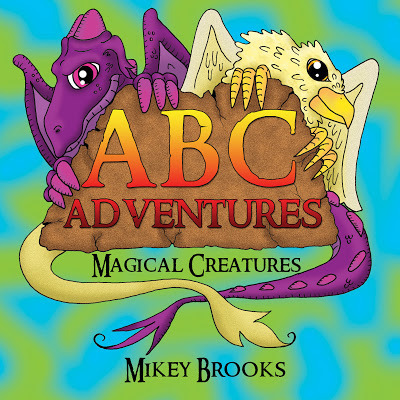

Published on March 01, 2013 00:00
February 28, 2013
Writing/Illustrating Conference Oppertunity:
Published on February 28, 2013 15:57
February 22, 2013
Author Interview: Diann Thornley Read
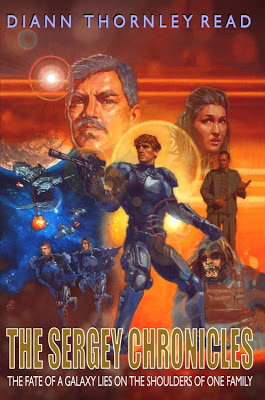
I am pleased to share with you a fantastic interview with an incredible sci-fi author, Diann Thornley Read. I’ve met Diann in my writers group online, the Authors’ Think Tank, and later in person at the LTUE Writers Conference. She has been a great source of information and is truly a good friend.
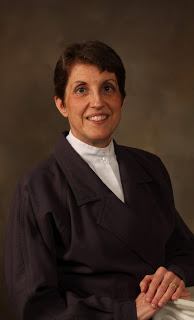 Diann wrote her first story at the age of five and never stopped writing. She taught herself to type on her father's ancient manual typewriter at the age of six because that was faster than pushing a pencil. After winning a statewide writing contest, junior high division, at the age of fourteen, she began her first novel, which was based on the Arthurian legends. This endeavor filled most of her high school years and freshman year of college--until a handful of friends introduced her to science fiction. There she stayed writing numerous books. And here is the interview:
Diann wrote her first story at the age of five and never stopped writing. She taught herself to type on her father's ancient manual typewriter at the age of six because that was faster than pushing a pencil. After winning a statewide writing contest, junior high division, at the age of fourteen, she began her first novel, which was based on the Arthurian legends. This endeavor filled most of her high school years and freshman year of college--until a handful of friends introduced her to science fiction. There she stayed writing numerous books. And here is the interview:The Sergey Chronicles were originally published by Tor in the late 1990’s but it was then called The Unified Worlds Saga. How do you feel about the name change?
Diann Read: I made the name change myself. The books are, after all, about the Sergey family, not about the interplanetary alliance called the Unified Worlds (which is similar to our NATO). Admiral Lujan Sergey (Commander-in-Chief of the special forces group called the Spherzah), his combat surgeon wife, Captain Darcie Dartmuth, and their teenage son, Tristan Sergey, get caught in the political/military intrigue leftover from an old war, and discover it's up to them to stop an impending new threat.
There are currently four titles in The Sergey Chronicles, do you plan on continuing the saga now that you have the books available as an eBook?
Diann Read: Actually, there are three books--Ganwold's Child, Echoes of Issel, and Dominion's Reach--but for the Kindle (and soon-to-be Nook) editions I also created an omnibus version: All three books in one download--and there are two covers for the omnibus! But back to your question. I've had a few requests from readers about my age for more stories about Lujan and Darcie and what they do after Dominion's Reach. I'd had no idea there was a market for middle-aged action heroes! I have loads of ideas filed away, so I may eventually go back and write some of those stories, but they'll likely be novelettes or novels rather than full-fledged books. (I'm currently working on a new YA series that's got my full attention.)
Orson Scott Card has said about book one, Ganwold's Child, “This novel is exemplary for showing how the effective military mind really works—you’ll find no romantic military nonsense here.” Can you share tips on how you created such a fantastic space military? Was there anything you used as a reference guide?
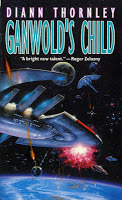 Diann Read: Well, I spent 23 years in the USAF, both on the active duty and reservist sides, and did a few deployments to "interesting" parts of the world, so a lot of the military stuff was drawn from personal experience. I wasn't a pilot but I did work around some, so I picked their brains for the pilot-specific details. When I brought back the first draft of Tristan's pilot training to one of my fellow officers, he went off into a corner to read it and next thing I knew he was laughing out loud. I thought, "Oh no, I'm never going to live this down!" but I gritted my teeth and asked him, "Okay, what did I do wrong?" He said, "Nothing! It's exactly right. I just can't believe you went into so much detail." Well, he'd given me all that detail!
Diann Read: Well, I spent 23 years in the USAF, both on the active duty and reservist sides, and did a few deployments to "interesting" parts of the world, so a lot of the military stuff was drawn from personal experience. I wasn't a pilot but I did work around some, so I picked their brains for the pilot-specific details. When I brought back the first draft of Tristan's pilot training to one of my fellow officers, he went off into a corner to read it and next thing I knew he was laughing out loud. I thought, "Oh no, I'm never going to live this down!" but I gritted my teeth and asked him, "Okay, what did I do wrong?" He said, "Nothing! It's exactly right. I just can't believe you went into so much detail." Well, he'd given me all that detail!What do you like most about writing Sci-Fi?
Diann Read: World-building, including climates different than ours, and coming up with strange (and sometimes violent) plants and unusual animals. I enjoy anthropology, so I really enjoy creating new cultures. I'm especially having fun with that in my Seventh Shaman series.
If you could be any planet in our solar system, besides Earth, which you be and why?
Hmmm, I've never thought about that. Saturn, probably. If you've ever seen NASA photos of Saturn (my husband, Jon, is a rocket scientist at NASA), those rings are breathtaking!
Do you have a favorite character that you’ve created? What about them do you like best?
Diann Read: That's like asking which is your favorite child! And by the time you've written a book or three about your characters, you do feel like you've brought them up! I was madly in love with Lujan while writing the Sergey books--that was before Jon came into my life--but Tristan and Akuleh (protagonist of the Seventh Shaman series) are my boys. They have enough in common that they'd probably become buds if they met--after some initial mutual misgivings--but there are some distinct difference between them, too.
What have you learned the most as a published author?
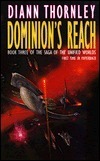 Diann Read: To take the bad with the good, accept it, and move on. In other words: Keep Writing!!! Not everyone is going to love everything you produce. After Ganwold's Child first came out from Tor Books in 1995, one critic said it was only good as a script for a video game. But all three Sergey books were out by the time I deployed to Bosnia in late 1997, and a handful of SpecOps guys liked them so much they made me an honorary member of their support team and took me along on one of their weekly runs up a local mountain. (Only time I've ever seen human bodies steam the way a horse does when you take off the saddle after a hard ride in winter! Watch for that in a future book.)
Diann Read: To take the bad with the good, accept it, and move on. In other words: Keep Writing!!! Not everyone is going to love everything you produce. After Ganwold's Child first came out from Tor Books in 1995, one critic said it was only good as a script for a video game. But all three Sergey books were out by the time I deployed to Bosnia in late 1997, and a handful of SpecOps guys liked them so much they made me an honorary member of their support team and took me along on one of their weekly runs up a local mountain. (Only time I've ever seen human bodies steam the way a horse does when you take off the saddle after a hard ride in winter! Watch for that in a future book.) What advice can you give to a writer just starting out? Are there any mistakes to avoid?
Diann Read: Do your homework (research) on your subject so you really know what you're talking about. That's a lot easier now with the Internet than when I was researching all the medical stuff for Dominion's Reach. Don't be afraid to try new things--within reason, of course!--just for the experience. Wherever you go, always have some way to take notes--you never know when you're going to get that blockbuster idea! Most important, write SOMETHING every day, even if it's just a few sentences. You're not really a writer if you don't really write.
What book, besides your own, do you recommend every writer have on their bookshelf? This can be anything from crafting tips to a novel you just love to pieces.
Diann Read: Here are two must-haves for my professional library: Hooked, by Les Edgerton. He focuses on gripping openings but also talks about story structure, and ratcheting up the tension and conflict. Hands down the most useful how-to book I've ever read! And Painless Grammar, by Rebecca Elliott. A very clear, concise, and even slightly comical approach to all those pesky issues like lay/lie, was/were, and who/whom.
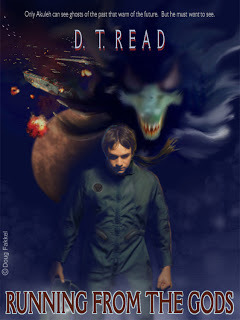 Is there anything else about your books that you’d like to share, or anything you’d like to shout out?
Is there anything else about your books that you’d like to share, or anything you’d like to shout out?Diann Read: We haven't talked much about my current project. The Seventh Shaman series is similar to the Sergey books, except aimed at the YA audience. My protagonist, Akuleh (the name means "Looks Up," which he has to learn to do on a few levels, but he goes by Ku), would be American Indian if the books were set on Earth. Having a non-Anglo protagonist was a very deliberate choice; I see far too few non-Anglo, especially American Indian, kids in YA fiction.
Ku is an orphan being brought up by an abusive stepmother. He knows a prophecy was made about him at his birth but he doesn't know what it said, so when his stepmother starts calling him Death Bringer he believes the worst. Time to leave before anyone else he cares about is killed! So he runs away from home, lies about his age, and joins the military. Ku also has a snarky streak, which is a lot of fun to write.
Like Lujan, Ku is a natural combat pilot, but that's as much curse as blessing during pilot training. He also has to deal with cultural issues--his latent shaman capabilities, which adds a fantasy element, his clan's traditions, and that prophecy--on top of facing prejudice and the usual teen challenges of boy-girl relationships and heartbreak. In the end Ku will hear the contents of the prophecy and learn that his life does have worth and purpose--a great purpose. And that's the message I want to get across to kids, especially at-risk kids.
Where can we find more about you and your books?
Diann Read: My website is at www.diannthornleyread.com, my Amazon author page is www.Amazon.com/author/diann.t.read, and my blog, Hero Journeys, is at www.diannread.wordpress.com. Please Like my Facebook page at www.facebook.com/pages/Diann-T-Read/291193624316145?ref=hl, and follow me on Twitter @DiannTRead. I'm also on LinkedIn and Goodreads.
Thank you so much for letting me interview you for the blog.
Diann Read: You're very welcome, Mikey. Thanks for letting me interview you, too!
Published on February 22, 2013 08:51
February 18, 2013
Ancient Aliens
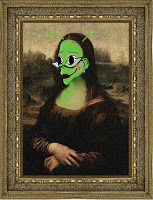 I was able to be a part of several panels while at LTUE: Life, the Universe, and Everything—a symposium geared toward fantasy and science fiction writers. One of the panels, Ancient Aliens, I was very excited about. The premise of the panel intrigued me because movies like Stargate have made tons of money off the idea of Ancient Aliens. I did an enormous amount of research and found that my efforts were in vain when the panel was high jacked from the beginning by a skeptical naysayer who was a part of the panel.
I was able to be a part of several panels while at LTUE: Life, the Universe, and Everything—a symposium geared toward fantasy and science fiction writers. One of the panels, Ancient Aliens, I was very excited about. The premise of the panel intrigued me because movies like Stargate have made tons of money off the idea of Ancient Aliens. I did an enormous amount of research and found that my efforts were in vain when the panel was high jacked from the beginning by a skeptical naysayer who was a part of the panel. What could have been a terrific experience to learn about ancient mysteries and help trigger some insights into writing another blockbuster story, soon crashed and burned like the Roswell spaceship. A few others and I made many attempts to reroute the panel back to the original topic, but we were out maneuvered by the negativity coursing throughout the panel. Disappointed by the lack of information shared and the pessimistic diarrhea covering the panel I decided to share some of the information I had gathered on Ancient Aliens here. So if you are interested in learning about some of history’s mysteries that could be contributed to extraterrestrial life, and you didn’t find it on a panel devoted to it because of one man’s nihilist attitude, you’ve come to the right place.
 So much can be attributed to Ancient Aliens because there are so many holes in history. Science hasn’t really given a concrete answer to the technology used in ancient societies. The pyramids to this day cannot be replicated to the amount of detail that was involved. There are strange things found, like hieroglyphs with what look like ancient light bulbs and depictions of spaceships and helicopters (found in the temple of Abydos) or the Bagdad battery that make people wonder. Of course a writer would take these and create a fantastical book solving the mystery by attributing it to extraterrestrial life. I’m not a firm believer in this theory, but it does make a great story.
So much can be attributed to Ancient Aliens because there are so many holes in history. Science hasn’t really given a concrete answer to the technology used in ancient societies. The pyramids to this day cannot be replicated to the amount of detail that was involved. There are strange things found, like hieroglyphs with what look like ancient light bulbs and depictions of spaceships and helicopters (found in the temple of Abydos) or the Bagdad battery that make people wonder. Of course a writer would take these and create a fantastical book solving the mystery by attributing it to extraterrestrial life. I’m not a firm believer in this theory, but it does make a great story.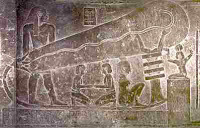 Plato described a place that was far more advanced in technology than even the Egyptians. He called it Atlantis. So far Atlantis has been smeared as nothing more than a myth, but many believe it did once exist. Could the Bimini Road (an underwater highway of rocks) be part of its remains? Who knows? But it does give way to speculation. Atlantis has been associated with Ancient Aliens since its conception.
Plato described a place that was far more advanced in technology than even the Egyptians. He called it Atlantis. So far Atlantis has been smeared as nothing more than a myth, but many believe it did once exist. Could the Bimini Road (an underwater highway of rocks) be part of its remains? Who knows? But it does give way to speculation. Atlantis has been associated with Ancient Aliens since its conception.
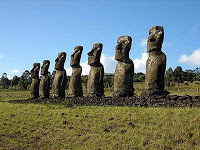 Another Mystery is the Nazka lines, curious images only seen from high above the dessert. Are they ancient landing strips or messages to intelligent life? Another hole in history, we don’t know for sure what they were used for or who made them. What about the stones at Stonehenge, or the giant statues erected on Easter Island? Could they be remnants of Ancient Aliens?
Another Mystery is the Nazka lines, curious images only seen from high above the dessert. Are they ancient landing strips or messages to intelligent life? Another hole in history, we don’t know for sure what they were used for or who made them. What about the stones at Stonehenge, or the giant statues erected on Easter Island? Could they be remnants of Ancient Aliens?I bring all these things up because they are what should have been discussed on the panel. These are great things that could trigger a story about Ancient Aliens. There are secrets lost in time. We are a species that has lost a greater part of our history to the unknown. Why not fill in the blanks with the fantastical?Below you’ll find just a few more topic ideas that I had come up with for future research. I think they might spark a few ideas about the ancient mysteries of the world.
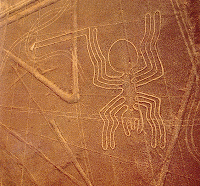 Vimana, a flying craft depicted in India’s tales. Had the power to shoot lasers and transport people through space. Ezekiel’s Wheel, a strange craft seen in a prophecy in the Bible. Elijah is taken up into heaven in a flying chariot of fire.Astrologically aligned gigantic Rocks found in Tiwanaku, Bolivia. The Bible is filled with stories about fantastic wonders, if you were to remove the god-factor you could come up with all sorts of alien stuff. 1463 and 1561 people record that they saw flying cigar shaped craft in the sky and an aerial battle in Germany and later Basel Switzerland. The Pharaoh Tuthmosis recorded he saw fire in the sky in 1480BC. Alexander the Great saw flying silver shields in 329AD. Seven years later a UFO shoots a laser beam at the wall of a city letting him through. Egyptian and South America pyramids all point at the stars and are astronomically aligned. Text from Samaria that is 5000 years old talk about flying craft with people in them.
Vimana, a flying craft depicted in India’s tales. Had the power to shoot lasers and transport people through space. Ezekiel’s Wheel, a strange craft seen in a prophecy in the Bible. Elijah is taken up into heaven in a flying chariot of fire.Astrologically aligned gigantic Rocks found in Tiwanaku, Bolivia. The Bible is filled with stories about fantastic wonders, if you were to remove the god-factor you could come up with all sorts of alien stuff. 1463 and 1561 people record that they saw flying cigar shaped craft in the sky and an aerial battle in Germany and later Basel Switzerland. The Pharaoh Tuthmosis recorded he saw fire in the sky in 1480BC. Alexander the Great saw flying silver shields in 329AD. Seven years later a UFO shoots a laser beam at the wall of a city letting him through. Egyptian and South America pyramids all point at the stars and are astronomically aligned. Text from Samaria that is 5000 years old talk about flying craft with people in them.I hope you get something from this rant of information, if not a cool idea for another exciting story. I did my best to share what I had planned but sometimes negativity can overwhelm a crowd. Happy writing! And that’s my key on Ancient Aliens.
Published on February 18, 2013 14:27
February 12, 2013
LTUE Conference
Life, the Universe, & Everything Writer Conference is this weekend. Febuary 14-17, held at the Provo Marriott Hotel & Conference Center. The hotel is located in the heart of Downtown Provo at 101 W 100 N, Provo, UT 84601. If you have never been to the conference you should make it a point to go. Its a fun filled weekend filled with fascinating authors, publishers, and people who are in the know. http://ltue.net/LTUE.html
This is the list of presentations and panels I will be involved in. I hope to see some of you there.
*Thursday:
3pm: Storyboards, Not Just For Picture Books (Presentation)
6pm: Digital Paining/Drawing (Panel)
*Friday:
10am: Ancient Aliens (Panel)
1pm: Scare ‘em While They’re Young (Panel)
2pm: Art for Children’s & YA Books (Panel)
8pm-9:30pm: BOOK SIGNING!!
*Saturday:
9am: The Wizard of Oz (Panel)
12pm: Creating Fantasy Art (Panel)
4pm: The 5 Plots of Picture Books (Presentation)
6pm: eBook Publishing (panel)
*The 'Authors' Think Tank' will also be recording our Podcast every morning and night at the conference. So come around and say hi.
Life, the Universe, & Everything symposium, commonly referred to as LTUE, is a three day academic symposium on all aspects of Science Fiction and Fantasy.
LTUE is comprised of panels, workshops, presentations and papers on writing, art, literature, media, science and other aspects of speculative fiction. It is the longest, student run symposium of its nature in the nation (or so we have been told).
This is the list of presentations and panels I will be involved in. I hope to see some of you there.
*Thursday:
3pm: Storyboards, Not Just For Picture Books (Presentation)
6pm: Digital Paining/Drawing (Panel)
*Friday:
10am: Ancient Aliens (Panel)
1pm: Scare ‘em While They’re Young (Panel)
2pm: Art for Children’s & YA Books (Panel)
8pm-9:30pm: BOOK SIGNING!!
*Saturday:
9am: The Wizard of Oz (Panel)
12pm: Creating Fantasy Art (Panel)
4pm: The 5 Plots of Picture Books (Presentation)
6pm: eBook Publishing (panel)
*The 'Authors' Think Tank' will also be recording our Podcast every morning and night at the conference. So come around and say hi.
Life, the Universe, & Everything symposium, commonly referred to as LTUE, is a three day academic symposium on all aspects of Science Fiction and Fantasy.
LTUE is comprised of panels, workshops, presentations and papers on writing, art, literature, media, science and other aspects of speculative fiction. It is the longest, student run symposium of its nature in the nation (or so we have been told).
Published on February 12, 2013 16:02
February 8, 2013
Author/Illustrator Interview: Travis Hanson
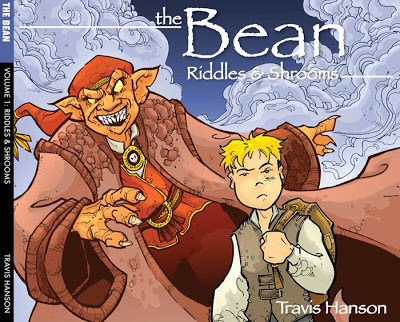 I'm excited to share with you Travis Hanson, an Eisner nominated creator of the webcomic/graphic novel series the Bean. An epic fantasy tale of a dishwasher. I have been a fan of Travis’ work and was happy he accepted the invitation to be interviewed. Here is a little about him:
I'm excited to share with you Travis Hanson, an Eisner nominated creator of the webcomic/graphic novel series the Bean. An epic fantasy tale of a dishwasher. I have been a fan of Travis’ work and was happy he accepted the invitation to be interviewed. Here is a little about him: 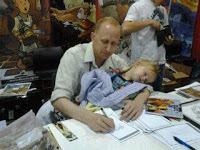 Travis Hanson: I am an artist and storyteller. I have been illustrating professionally for about 15 years now. I am also a father of 5 incredible kids, and husband of a beautiful enduring wife. “the Bean” is my story. Published both as a webcomic and as printed graphic novels. In 2011 Bean was nominated for an Eisner in the “Best Digital”. That was a huge motivation to keep the story going. I am lover of fantasy art and epic story telling. I am also a believer that “If you truly want something bad enough, you will find a way to make it happen.”. I also believe that it is our responsibility to teach others how to achieve their dreams as well. Yet, in the end it really comes down to how bad do you want to see your own dream happen.
Travis Hanson: I am an artist and storyteller. I have been illustrating professionally for about 15 years now. I am also a father of 5 incredible kids, and husband of a beautiful enduring wife. “the Bean” is my story. Published both as a webcomic and as printed graphic novels. In 2011 Bean was nominated for an Eisner in the “Best Digital”. That was a huge motivation to keep the story going. I am lover of fantasy art and epic story telling. I am also a believer that “If you truly want something bad enough, you will find a way to make it happen.”. I also believe that it is our responsibility to teach others how to achieve their dreams as well. Yet, in the end it really comes down to how bad do you want to see your own dream happen.
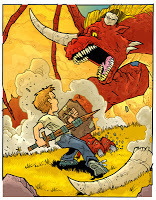 I have to say I am a fan of your work and look forward to your weekly posts. The Bean series is a compilation of graphic novels. For those unfamiliar with graphic novels can your share what sets these apart from say comic books?
I have to say I am a fan of your work and look forward to your weekly posts. The Bean series is a compilation of graphic novels. For those unfamiliar with graphic novels can your share what sets these apart from say comic books? Travis Hanson: Why thank you, I am excited you are enjoying my fantasy adventure of a dishwasher. I would say though as for what sets graphic novels apart from comics is not much really. They are comics and they both tell a story. Comic books though tend to tell in 24 pages while graphic novels take a little longer.
As an illustrator myself, I know that hours of work go into creating one illustration; from sketching, to penning, then paining it can be a challenge. Can you explain the process you go through in creating your art?
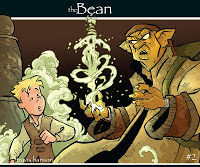 Travis Hanson: It usually just starts with a sketch. Nothing more, nothing less. Once I get the pencils done, I then ink on vellum, tracing paper. This creates a perfect piece of line art when I scan. After that it goes into a layout program or a coloring program, depending on the needs. Music though is a big part of my art. I use it all the time in the creation process.
Travis Hanson: It usually just starts with a sketch. Nothing more, nothing less. Once I get the pencils done, I then ink on vellum, tracing paper. This creates a perfect piece of line art when I scan. After that it goes into a layout program or a coloring program, depending on the needs. Music though is a big part of my art. I use it all the time in the creation process.How did you get your start in illustrating? Have you always done it or was it something you picked up later in life?
Travis Hanson: I have always drawn pictures but I did not get into the industry until my mid-twenties. I got a little sidetrack and then was pleasantly reminded that artistic gifts can go away if you do nothing with them, After that I got my first job as a cartoonist for a local print shop and the rest is history. :)
I can tell from The Bean series that you favor fantasy and epic stories. What inspired you to write these books?
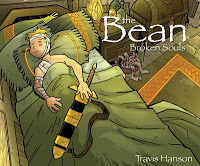 Travis Hanson: I love epic fantasy and my inspiration comes from many sources. Books like Bone and ElfQuest, to a general disdain of doing dishes, to watching my kids play. It all sort of just got lumped together and gelled. I am still getting inspiration on my story though and it is getting stronger because of it.
Travis Hanson: I love epic fantasy and my inspiration comes from many sources. Books like Bone and ElfQuest, to a general disdain of doing dishes, to watching my kids play. It all sort of just got lumped together and gelled. I am still getting inspiration on my story though and it is getting stronger because of it.I believe you used a Kickstarter program to help publish your series of graphic novels. Can you share how that worked and if you recommend others like you to use it? How has your journey to publication been?
Travis Hanson: I have run 3 successful Kickstarter campaigns. Each one was stronger than the last. It's been a fantastic ride. The key though is to have an audience (hence my love for webcomics) and build off that. I would also say prepare. Just don’t jump into it. It can be a very, very bumpy ride. :)
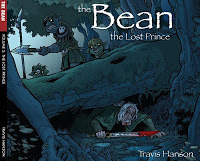 I am a fan of James Owen and I have a quote of his attached to my computer screen. It helps me stay positive and focus on my goals as an author/illustrator. “Never, ever, sacrifice what you want most, for what you want most at the moment.” I’ve seen that you and I favor a lot of the same artists. Can you share one or two things that you have learned from your mentors?
I am a fan of James Owen and I have a quote of his attached to my computer screen. It helps me stay positive and focus on my goals as an author/illustrator. “Never, ever, sacrifice what you want most, for what you want most at the moment.” I’ve seen that you and I favor a lot of the same artists. Can you share one or two things that you have learned from your mentors? Travis Hanson: James asked me a question when I first got into this field. He asked, “Trav, how bad do you want this?” before I could answer he stopped me and said, “you cannot tell me how bad you want it, you have to show me.” I have lived by that ever since.
What are some tips you can share to an author/illustrator just starting out?
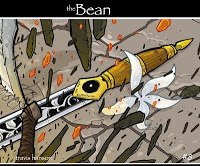 Travis Hanson: Stick it out, pay your dues, listen to c/c, treat it as a job, and . . . “How bad do you want it?” I can't repeat that enough. Only you as a creator know the answer to that and if you want something bad enough you will figure out how to be successful at it—No matter what the odds.
Travis Hanson: Stick it out, pay your dues, listen to c/c, treat it as a job, and . . . “How bad do you want it?” I can't repeat that enough. Only you as a creator know the answer to that and if you want something bad enough you will figure out how to be successful at it—No matter what the odds.Is there anything else you’d like to share or shout out?
 Travis Hanson: That dreams are meant to be followed and sometimes it's a rough road, but in the end the payoff is not always monetary but satisfaction that you created something that people appreciate.
Travis Hanson: That dreams are meant to be followed and sometimes it's a rough road, but in the end the payoff is not always monetary but satisfaction that you created something that people appreciate. Thank you so much Travis, these are words to truly live by. For more information on Travis Hanson creator of the Bean series, visit his website at: http://www.beanleafpress.com/. You can also find him on Twitter at: @Travsthebean, on Facebook as Travis Hanson - The Bean
Published on February 08, 2013 00:00





